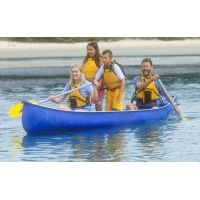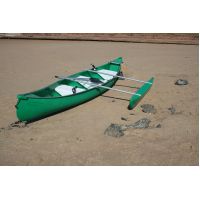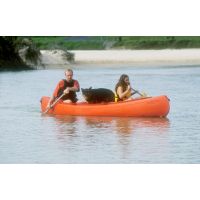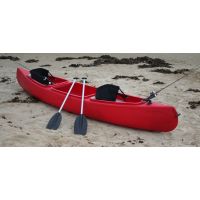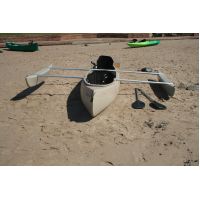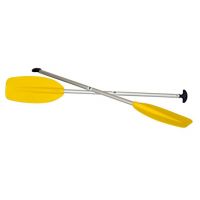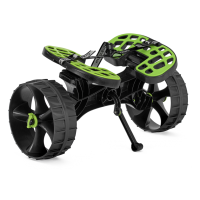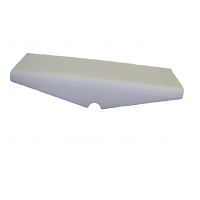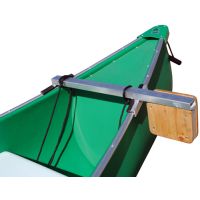Cart is empty
Rudders
There are many features and options that the designer can choose to include or omit with the overall decision being dependent on the end benefit or performance that he/she would like the boat to have or do.
The different features to consider when looking to purchase a canoe, kayak, sea kayak or sit-on-top can be found under each heading.
- Hull Shape
- Seats
- Steering Systems
- Rudders - see below
- Hatches
FEATURES EXPLAINED - RUDDERS
There are 2 basic rudder styles available in sea kayaks in Australia, a traditional "drop-over" rudder and an "integrated" rudder.
A traditional 'drop over rudder" is the most common style and sits up on the back deck until it is required. It then moves through 270 degrees, until it is found in the down position.
An "integrated" rudder can also be known as an "under-slung" rudder.
It is the lowest point of the underside of the kayak and is permanently "on". It can not be raised up onto the upper deck, like a "drop-over" rudder can.
TYPES OF RUDDERS
At Australis, we use a traditional "drop-over" rudder because:
- we prefer the versatility of being able the have the rudder in the water, or stored up on the rear deck;
- we have found that a drop-over rudder is more responsive, especially in open ocean conditions, because they give a deeper penetration into the water;
- the drop-over system is easier to replace if it is damaged in rough paddling conditions.
At Australis, we do not use an "integrated" rudder because:
- they are easier to damage (especially in rocky or shallow conditions) because they are permanently down;
- they don't penetrate as deeply into the water, meaning that you have less control. This is especially evident in a swell in open ocean conditions because as you travel up and down the swell, a shallower rudder blade will come out of the water more often, meaning that you have less control of the kayak (when you need it most in the rough conditions).
The first plastic sea kayak that we made, the "Trilogy" had an integrated rudder, and because of the short comings that we found with this system, all of our sea kayaks are now supplied with a "traditional drop-over rudder".
Rudder Head
The rudder head serves 2 purposes.
- it holds the rudder blade in a firm position
- it attaches the rudder assembly to the kayak.
The original Australis sea kayaks were released with rudder heads that were made from 316 marine grade stainless steel and then powder coated. We used 316 stainless because it was strong and resistant to rusting in salt water than other metals.
We now use a "glass-filled nylon " rudder head because it is strong, has some in-built flexibility and helps to reduce the weight of the kayak.
Rudder Blade
Whilst we have converted our rudder head from stainless steel to plastic, the rudder blade continues to be made out of 316 marine grade stainless steel.
Some other manufacturers use plastic rudder blades, whilst others use aluminium.
At Australis, we use stainless steel because:
- it is more resistant to rusting than other metals;
- it is naturally heavier than water and does not need to be locked down in position with the raise/lower cables to stop it from floating up (like some the the plastic rudder blades will do);
- if you are washed up onto rocks and the blade bends, it can be bent back, unlike a "cast alloy" rudder blade that is more likely to shatter under pressure.
Points to Consider
- When you launch your sea kayak from a beach and paddle out through the waves, we recommend that you have your rudder pulled up onto the back deck and not down in the "engaged" position.
When you paddle into a wave, if the wave has more power behind it than you have strength to push through it, you will be pushed backwards, and if this happens in shallow water, your rudder can dig into the sand and be damaged, or act as a fixed point around which you can be pivoted.
- There are times when the rudder may become inoperative due to damage or malfunction. We recommend that you also learn how to paddle your kayak in a straight line and turn it without using the rudder, so that in the event that something unexpected happens, you are able to get yourself safely back to land.
© 2013-2025 Australis Canoes. Powered by AVS Online Store

